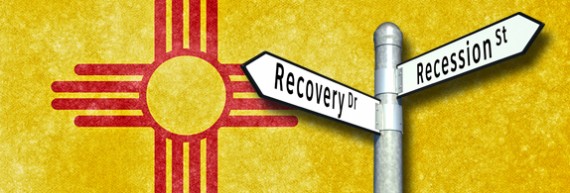For nearly 300 years, Santa Fe was the hub of all things New Mexican, not just its politics but its economy, too. This was the center of government under Spaniards, Mexicans and North Americans, the focus of tourism, the cynosure of the southwestern art world and the gateway to the Southwest via the legendary Santa Fe Trail.
Then everything changed. Trains replaced wagons and horses, and they bypassed Santa Fe but made Albuquerque into a transcontinental hub. Santa Fe got a state prison and Albuquerque the University of New Mexico. During World War II, Santa Fe got a Japanese prison camp while Albuquerque got a major Army Air Force base. After the war, the old Sandia Base quickly evolved into a major facility housing not only the U.S. Air Force, but more importantly, Sandia National Laboratory. Finally, while Santa Fe continued to be a stopover on a local road, Albuquerque became the crossroads of two interstate expressways linking New Mexico to the world. The rest, as they say, is history.
Until recently, Albuquerque was the state’s principal, in fact almost the only, focus of a modern economy in New Mexico. It was the center of high tech, of a national laboratory, of spinoff industries, of manufacturing, of construction, of federal employment, of research, science, medicine and information technology, of airline, railroad, trucking and automobile transportation, of the media and banking and entertainment and retail super malls, of just about everything that makes up a successful modern economy in the United States. In 2004 Forbes magazine ranked Albuquerque the 12th best city in the nation for doing business.
Except history did not stop in the 1960s or even in the early 2000s. New Mexico continued to change, and the changes were not kind to the Duke City, changes made explicit and unavoidably evident in new economic data released a few days ago.
The data show New Mexico’s economy in a double dip recession, losing jobs while all the surrounding states as well as the nation as a whole gain them. What is not so readily apparent from the data is that New Mexico would in fact be doing pretty well were it not for Albuquerque, or technically the four-county Albuquerque Metropolitan Area, which includes Torrance County and the East Mountain area. The workforce in Albuquerque and the number of jobs are both at levels last seen in 2006 and 2007, and with every new economic report they shrivel further. At some point, we will hit bottom. But no one knows where it is.
While the state as a whole lost only 600 jobs in the past year, Albuquerque lost 2,700, meaning that if you subtracted the city from the state figures, the state actually gained 2,100 jobs. The city’s jobless rate, at a seasonally adjusted 7.0 percent in May, is one-half percent higher than the state and almost a full percent higher than the nation. The state is not in recession; the city is. The state is not collapsing; Albuquerque is. The state is not really at the bottom of the national pile; the city is.
Why?
The city’s economy has been based on a pathetically limited menu of activities. Foremost has been federal employment, focused largely but not entirely on Sandia and Los Alamos nuclear science and engineering. Second, has been professional and business services, many linked to subcontractors for the national labs. Third has been manufacturing, again largely linked to a single employer, Intel. Fourth has been construction, driven by state and federal spending or private spending stimulated by well-paid government employees moving into the area. Fifth is information; long the center of the state’s media, Albuquerque has been losing jobs in television, radio, magazines and newspapers as well as in the advertising and public relations businesses that feed them.
All of these areas—government, construction, manufacturing, information and business services—are in decline. The combined losses of these five high-paying sectors was 4,300 during the past year.
What is partially replacing them? Public schools, especially for the increasing numbers of minority children; health care, mainly for the elderly; restaurants and motels, mainly for tourists. The jobs that have been lost are the best paid; the jobs that are being created are the worst paid.
The lost jobs were mainly held by men supporting wives and children with skilled labor or high tech work. The new jobs are largely filled by single women struggling to support children on work that pays little more than minimum wage. It is more than symbolically significant that Walmart is the state’s largest private employer.
Add it all up and the sum is that the city’s economy is even worse than it looks at first glance.
The area of the state’s economy that is prospering best is oil and gas, centered mostly in the southeast corner. The money it pumps into the state’s economy, however, feeds local coffers or goes to the state, leaving the rest of the New Mexico out in the cold. This is why city and county job reductions far exceed state cutbacks, which have been minimal. The Legislature zealously guards state revenue, while making local areas pay, for example, for a state tax cut.
How much good oil and gas revenues are doing even in such towns as Clovis, Artesia and Carlsbad, however, is open to question. These cities are experiencing a serious housing shortage. Why? Because builders refuse to put up new houses for the influx of oil and gas workers. They have seen too many boom-and-bust cycles and are afraid the present boom will not last, leaving them with houses they cannot rent or sell and debts they cannot pay. So workers and their families camp out in motel rooms at more than $200 a night.
It is hard to see how Albuquerque is going to escape from the hole it dug for itself. During the boom days, it could have but didn’t ensure that the federally stimulated largesse developed the overall economy, built a trained workforce and established an array of successful high tech industries. Now with the pillars of its economy crumbling, it has nothing left to rely on. Albuquerque in this sense resembles the Mideast petro-states that live high off oil revenues but that will return to poverty once the black gold is exhausted.
There are a few small efforts in Albuquerque to stimulate a revival, mainly due to initiatives of the University of New Mexico, but there is no sign that they are generating the specific gravity that could create a serious and sustained revival.
One national publication included Albuquerque among cities in a “death spiral.” Even among local economists pessimism is rife. “Regrettably, unless a Microsoft or an Apple pops up out of the blue, this is not the place for economic activity,” retired University of New Mexico economics professor Allen Parkman told New Mexico Business First last week. “You produce goods either where the consumers are or where the workers are, and we aren’t any of those. If you are Tesla and you are thinking of coming here and you want 2,000 moderately well-qualified workers, are they here? I don’t think so.”
Albuquerque is not the first city to have its economic foundations shaken by a changing economy. Some cities were never able to adapt to change. Others, however, recreated themselves by imagining new ideas and generating new energy to make them happen. Albuquerque’s fate is not sealed. The first step, though, is for the city’s leaders to realize they can’t keep on living on the past and simply projecting it into the future; the past is past.
(Recovery/Recession sign by Chris Potter, NM flag by Nicolas Raymond)




Responses to “What would N.M. look like without Albuquerque?”